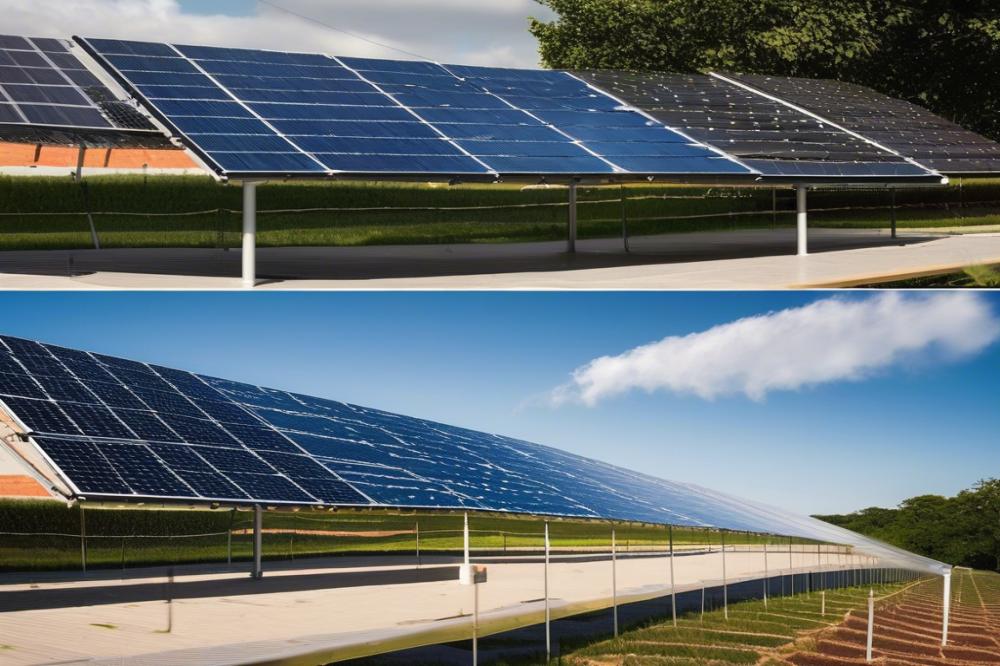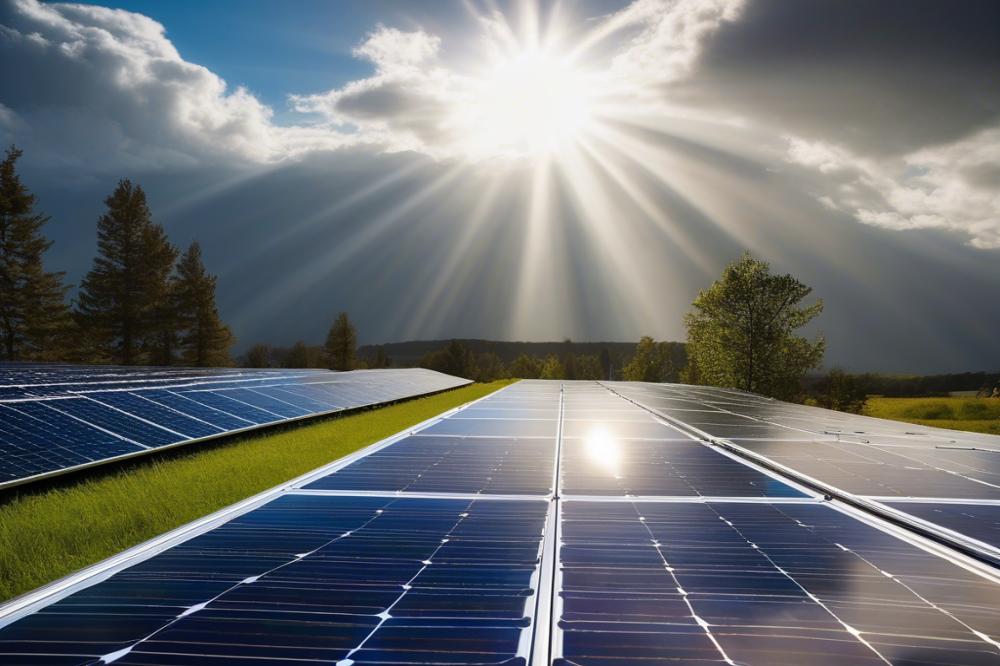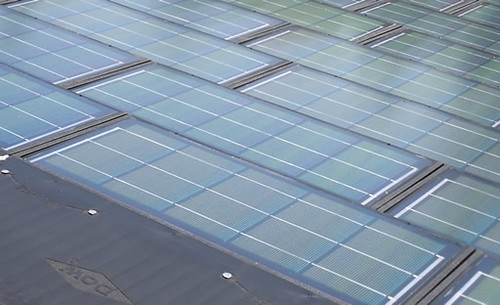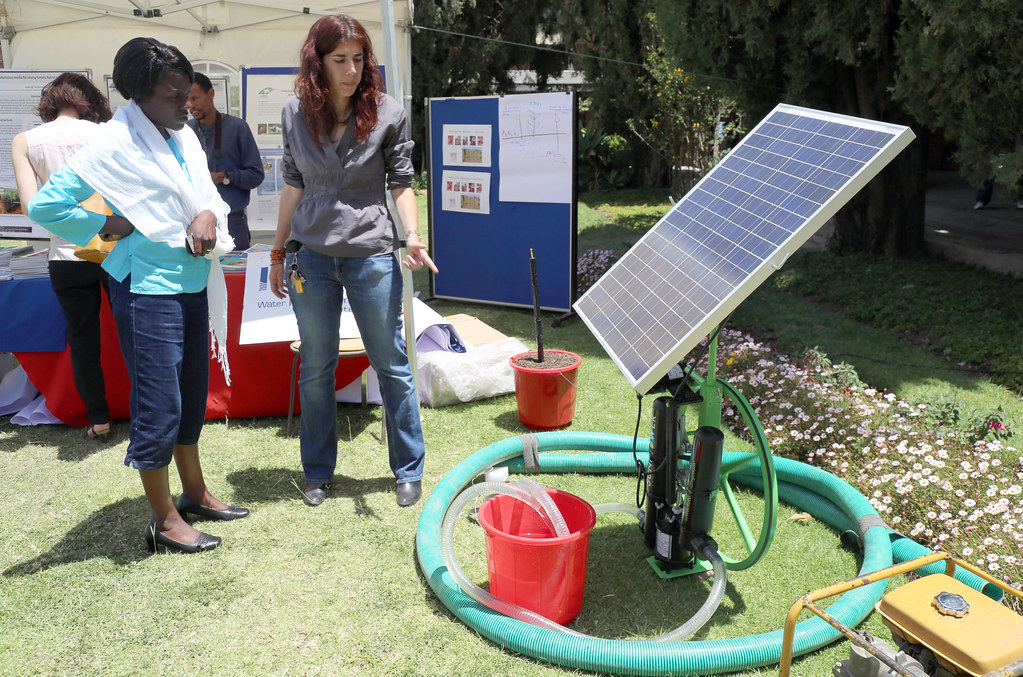Introduction
In today’s world, solar energy serves as a crucial resource for many households and businesses. Its benefits extend far beyond just saving on electricity bills. Durability becomes vital when considering the impact of extreme weather on solar panels. Hailstorms and high winds can pose significant threats to these solar energy systems.
Hail can damage solar panels, leading to costly repairs or replacements. hailstorm protection is essential to shield against such unpredictable events. high winds can also dislodge poorly secured panels, compromising their efficiency and functionality. When operating in regions prone to severe weather, understanding how to reinforce solar panels becomes an urgent concern.
Proper protection and maintenance are key to ensuring long-lasting performance. This involves selecting durable materials that withstand nature’s forces. Additionally, effective roof mounting systems greatly contribute to a panel’s ability to endure strong gusts. Storm-resistant solar panels offer an additional layer of security against environmental challenges.
Energy efficiency also plays a role in the discussion about weatherproofing solar panels. When panels operate at their best, combined with tough construction, homeowners experience optimal energy production. Installation tips can further advance the resilience of these systems. By prioritizing solar panel durability, individuals can enjoy both peace of mind and reliable energy from their solar investments.
Understanding solar panel durability

Durability in solar panels refers to their ability to withstand harsh conditions like hailstorms and high winds. This term captures how well the panels hold up against physical stresses and the effects of weather. Strong panels are essential for maximizing energy efficiency and performance over time.
Factors Affecting Durability in Harsh Weather Conditions
Harsh weather can greatly impact solar panels. High winds can pose risks, especially if the installation isn’t secure. Hailstorms also challenge panels; they can cause cracks or dents. Additionally, temperature fluctuations can stress materials, making them more vulnerable. A poor roof mounting system may compromise installation, leading to increased wear and tear.
Materials and Technologies that Enhance Durability
Many durable materials exist to improve resistance against the elements. Manufacturers are increasingly using stronger glass and aluminum frames. These materials are designed explicitly for weatherproofing solar panels. Storm-resistant solar panels often come with protective coatings, enhancing their ability to resist physical damage. Advanced technologies, like reinforced backing sheets, also contribute to environmental resilience.
Installation tips are crucial for long-lasting performance. Properly securing panels during setup is vital for preventing wind uplift. Regular solar panel maintenance can aid in spotting potential issues early, ensuring that panels remain functional over time. A well-installed system not only performs better but also prolongs the lifespan of the panels.
solar panel reinforcement Techniques

When it comes to protecting your solar panels, understanding solar panel reinforcement is key. Severe weather can damage even the sturdiest installations. Hail and high winds pose serious threats. Fortunately, there are several methods to enhance durability against these elements.
Overview of Solar Panel Reinforcement
Solar panel reinforcement focuses on improving resilience. Reinforced panels can withstand harsh conditions like heavy rainfall or snow. Choosing the right materials is a significant part of the process. Durable materials such as tempered glass help shield panels from hail. Additionally, robust mounting systems contribute to overall stability.
Key Methods for Reinforcing Panels Against Hail and High Winds
One effective method involves strengthening roof mounting systems. Properly secured mounts can prevent panels from being dislodged during strong gusts. Another technique is weatherproofing solar panels with sealants that resist moisture and heat. Enhancing the installation process can also make a difference. Installing panels at a slight angle helps with drainage and reduces debris build-up.
Using wind-resistant designs is another way to protect your investment. Innovative shapes have the potential to deflect wind rather than allow it to exert pressure. Consider adding protective barriers around the panels for extra security. These barriers can guard against hail while allowing panels to operate efficiently.
Importance of Storm-Resistant Solar Panels
Storm-resistant solar panels offer peace of mind. They reduce the risk of damage, protecting your long-term investment. High winds can dislodge less secure installations, resulting in increased repair costs. Investing in reinforcement techniques can lead to better energy efficiency as well. Well-maintained systems generate more power, providing benefits to homeowners and the environment alike.
Regular solar panel maintenance is crucial for longevity. Inspect the installation periodically to catch any wear or loose components. Taking proactive steps keeps your system functioning optimally. By reinforcing your solar panels, you not only enhance their environmental resilience but also promote sustainable energy practices.
Installation Tips for Enhanced Durability
Proper installation is critical for solar panel longevity. Begin with selecting the right roof mounting systems. A secure mount can greatly increase your system’s resilience against high winds and hailstorms. Use durable materials that withstand harsh weather conditions. Lightweight options may seem appealing, but they often compromise on strength.
Choosing storm-resistant solar panels also matters. Look for panels specifically designed to handle extreme weather. Some products boast certification for high wind areas. These can provide an added layer of protection for your investment. Don’t overlook the importance of weatherproofing solar panels during installation. Sealants and protective coatings can help guard against water intrusion.
Consider the angle of installation as well. A tilt that allows snow and rain to run off could be beneficial. This way, debris doesn’t accumulate, potentially damaging the panels. Solar panel maintenance is essential; a clean panel will perform better and last longer. Routine inspections after storms can spot any issues early.
Ensure that mounts are secured to rafters rather than merely the roof structure. This enhances stability during intense wind events. Use multiple points of attachment for extra security. These steps can prevent panels from detaching, which is a concern during severe storms.
Finally, aim for energy efficiency alongside durability. A well-installed panel not only withstands environmental challenges but also captures sunlight effectively. High-quality installations optimize energy output and minimize future costs. When you follow these installation tips, you significantly increase the performance longevity of your solar system.
Weatherproofing Solar Panels
Overview of Weatherproofing Methods
When considering solar panel reinforcement, weatherproofing is a critical factor. Using techniques such as protective coatings and sealants helps guard against the elements. Many installers apply a layer of silicone or polyurethane sealants around connections. This application prevents moisture from seeping in, which can cause significant damage over time. Roof mounting systems should be designed to withstand heavy winds and impacts. Choosing storm-resistant solar panels is vital for regions prone to severe weather.
Importance of Sealing and Protecting Connections
Sealing connections is essential for long-term solar panel function. Gaps in these areas can lead to water damage and corrosion. Ensure all areas where wires meet the solar panel are tightly sealed. By focusing on these small details, you can improve energy efficiency. Avoiding issues at the connection points will save time and resources during solar panel maintenance.
Using Durable Materials for Added Protection
Selecting durable materials makes a significant difference in weather resilience. Heavy-duty frames made from aluminum can withstand high winds and hailstorms. Look for panels with reinforced glass; this provides a strong barrier against harsh conditions. High-quality materials may slightly increase the initial cost, but they elevate the overall performance. Techniques such as adding protective films can also help in creating a barrier against environmental aggression. Investing in better materials leads to superior durability, which ultimately enhances the lifespan of your solar setup.
Solar Panel Maintenance for Long-Term Resilience
Routine maintenance is crucial for solar panel longevity. Keeping panels clean and free of debris will help maximize energy efficiency. Dust, leaves, and bird droppings can all block sunlight. Regular cleaning schedules are necessary to maintain optimal performance. Choosing appropriate weatherproofing solar panels can provide additional protection.
High winds can be particularly destructive. Storms often lead to debris that can damage panels. Proper installation is key for these conditions. Using robust roof mounting systems ensures panels stay securely in place. For areas prone to severe weather, investing in storm-resistant solar panels should be considered.
Maintenance needs change with extreme weather. Regular inspections become even more important after a storm or high winds. Checking for cracks or loose fittings can prevent bigger issues later. Timely repairs can save costs and extend a panel’s life. Durable materials can withstand a lot but may still require attention.
Each season may bring different challenges. Snow accumulation can also damage panels if not addressed. Look for signs of corrosion or wear over time. Consistent monitoring allows homeowners to catch issues before they escalate. Overall, proactive maintenance plays a big role in ensuring solar panel durability.
Final Thoughts on Solar Panel Protection
Reinforcing solar panels is crucial for homeowners who want to protect their investments. Strategies like using stronger mounting systems and incorporating wind-resistant designs can drastically improve resilience against severe weather. Furthermore, regularly inspecting and maintaining your panels contributes to their long-term effectiveness. The right installation can make a huge difference when facing hailstorms or high winds.
Preparation for extreme weather cannot be overlooked. With climate change causing more unpredictable storms, it’s wise to stay ahead of potential damage. Planning for harsh conditions can save homeowners from costly repairs and replacements down the line. Investing in solar panel reinforcement not only shields them from environmental threats but also optimizes their performance.
Taking the steps to enhance durability is not just about immediate safety. Long-term benefits are significant. Increased durability leads to fewer disruptions in energy production and reduced maintenance costs. When you prioritize the strength of your solar panels, you prepare for a future where sustainable energy continues to thrive, no matter the weather.



